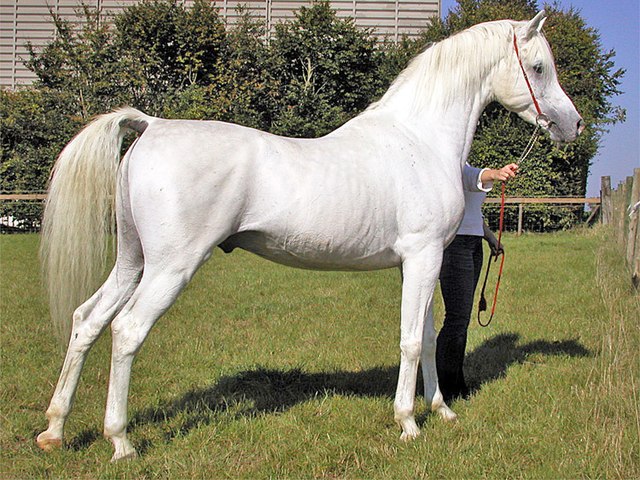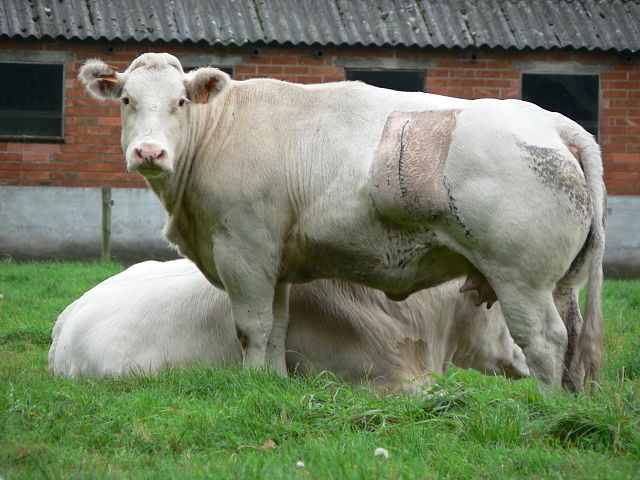Purebreds are "cultivated varieties" of an animal species achieved through the process of selective breeding. When the lineage of a purebred animal is recorded, that animal is said to be "pedigreed". Purebreds breed true-to-type which means the progeny of like-to-like purebred parents will carry the same phenotype, or observable characteristics of the parents. A group of purebreds is called a pure-breeding line or strain.
A purebred Arabian horse.
Pure-breed Zwergschnauzer
Purebred chocolate Persian show cat with "Grand Champion" title.
A Frisian horse (stallion), a breed which earliest known reference is from AD 50 (reign of Roman Emperor Nero) and is pedigree registered since 1879
Selective breeding is the process by which humans use animal breeding and plant breeding to selectively develop particular phenotypic traits (characteristics) by choosing which typically animal or plant males and females will sexually reproduce and have offspring together. Domesticated animals are known as breeds, normally bred by a professional breeder, while domesticated plants are known as varieties, cultigens, cultivars, or breeds. Two purebred animals of different breeds produce a crossbreed, and crossbred plants are called hybrids. Flowers, vegetables and fruit-trees may be bred by amateurs and commercial or non-commercial professionals: major crops are usually the provenance of the professionals.
A Belgian Blue cow. The defect in the breed's myostatin gene is maintained through linebreeding and is responsible for its accelerated lean muscle growth.
This Chihuahua mix and Great Dane shows the wide range of dog breed sizes created using selective breeding.
Selective breeding transformed teosinte's few fruitcases (left) into modern maize's rows of exposed kernels (right).
Researchers at the USDA have selectively bred carrots with a variety of colors.








